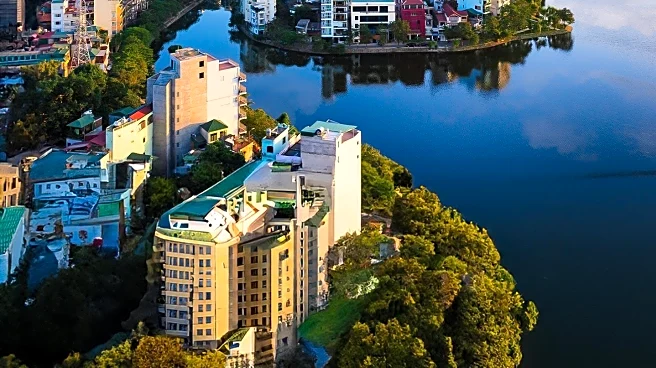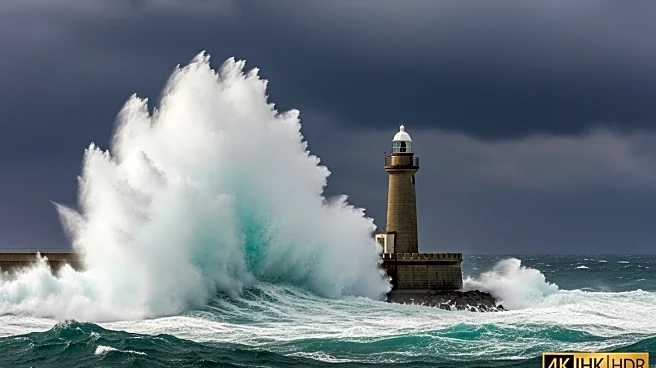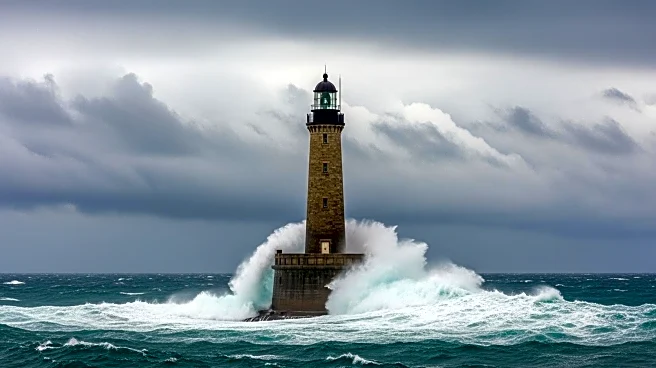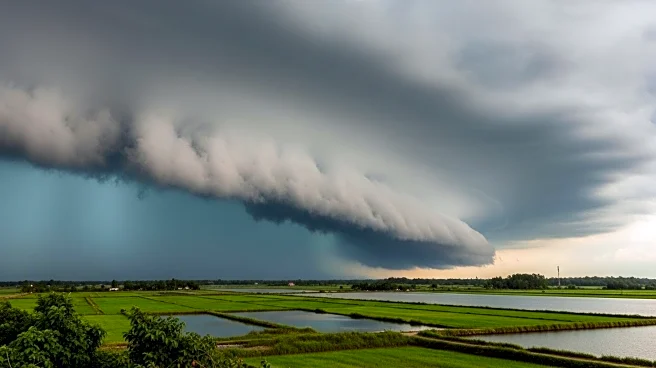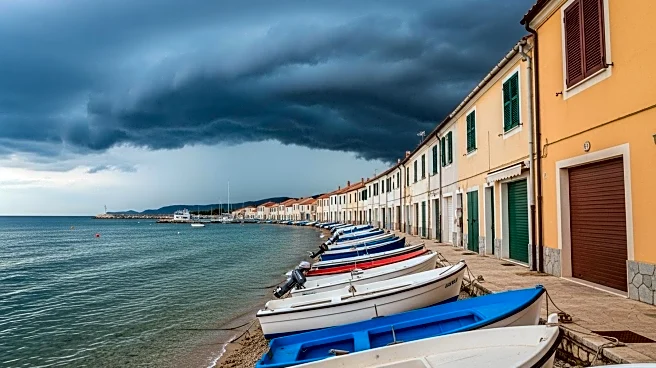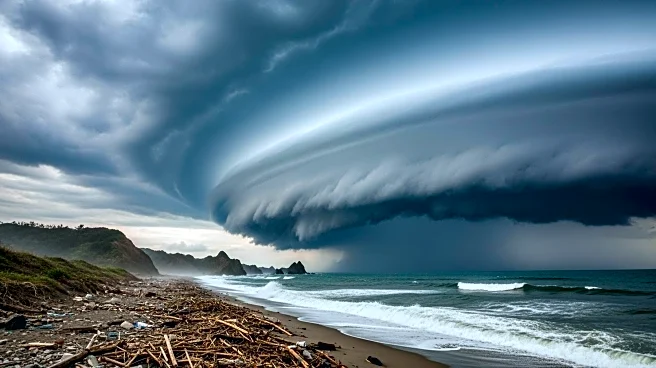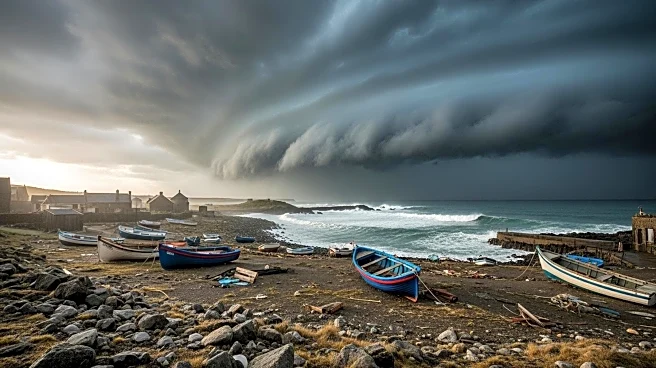What's Happening?
In Vietnam, architects are developing innovative solutions to address the country's vulnerability to climate change. With over 2,000 miles of coastline and frequent exposure to natural hazards, Vietnam faces significant risks from rising sea levels and intensified storms. Architectural firms like Tropical Space and H&P Architects are turning to traditional building techniques and local materials to create flood-resistant structures. Projects such as the Terra Cotta Studio and the Floating Bamboo House prototype demonstrate how architecture can adapt to the natural environment, using designs that allow buildings to withstand floods and storms while maintaining functionality.
Why It's Important?
Vietnam's architectural innovations are crucial in mitigating the impacts of climate change on vulnerable communities. By incorporating traditional methods and materials, these designs offer sustainable and cost-effective solutions that can be replicated in other regions facing similar challenges. The focus on resilience not only protects communities but also preserves cultural heritage and promotes environmental sustainability. As climate change continues to pose global threats, these architectural approaches could serve as models for other countries seeking to enhance their disaster preparedness and resilience.
What's Next?
The success of these architectural projects in Vietnam could lead to broader adoption of similar strategies in other climate-vulnerable regions. However, challenges remain, such as regulatory barriers and the need for widespread acceptance of non-traditional materials like bamboo. As interest in these solutions grows, there may be increased efforts to adapt building codes and regulations to accommodate innovative designs. Additionally, international collaboration and knowledge sharing could facilitate the spread of these resilient architectural practices, helping more communities prepare for the impacts of climate change.
